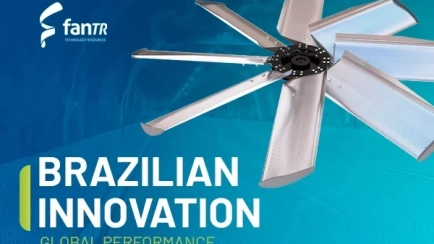
Brazilian innovation, global performance



Now in stock available for prompt delivery in the United States
FanTR, a reference in solutions for industrial ventilation and cooling, starts its operation in the United States with a clear proposal: to deliver cutting-edge technology with agility, reliability and global experience.
With a local distribution center and stock available for prompt delivery, we are prepared to serve the North American industry with speed and customized solutions for the most diverse challenges, with the experience of those who have worked on large-scale projects around the world.
Specialist in custom-made cooling tower fans.
FanTR cooling tower fans have been designed to work in extreme environments and critical applications, with maximum thermal efficiency and the lowest energy consumption possible.
Industries such as mining, pulp and paper, food and beverages, chemicals and petrochemicals already rely on our tailor-made designs to guarantee high performance with robustness and durability.
Brazilian technology that cooled the World Cup
Among FanTR's most noteworthy cases in the world is the supply of industrial fans for the Khalifa International Stadium in Qatar during the FIFA World Cup.
A highly technical project that required specific solutions for air conditioning in one of the most challenging climates on the planet. The successful performance reinforces our ability to adapt solutions to international standards and complex environments - an essential competitive differential for the North American market.
Distribution Center in the USA: more agility for your industry
With local operations and products in stock, FanTR guarantees:
● Fast delivery of industrial fans and components on demand
● Reduced logistics times and import costs
● Specialized technical support with direct service
● Flexible supply models for different industry sizes
Cutting-edge engineering, with local commitment and global vision
FanTR's arrival in the USA is more than just an expansion: it is a firm step towards a demanding market where technology, reliability and response time make all the difference.
We have positioned ourselves as strategic partners for the industry, offering applied engineering, scalable solutions and the structure to deliver excellence and speed.
Talk to our engineering team and discover the ideal solution for your project.
FanTR - Ventilation and cooling solutions that move the industry
Now also in the United States
Share your questions and ideas with us by contacting us below.